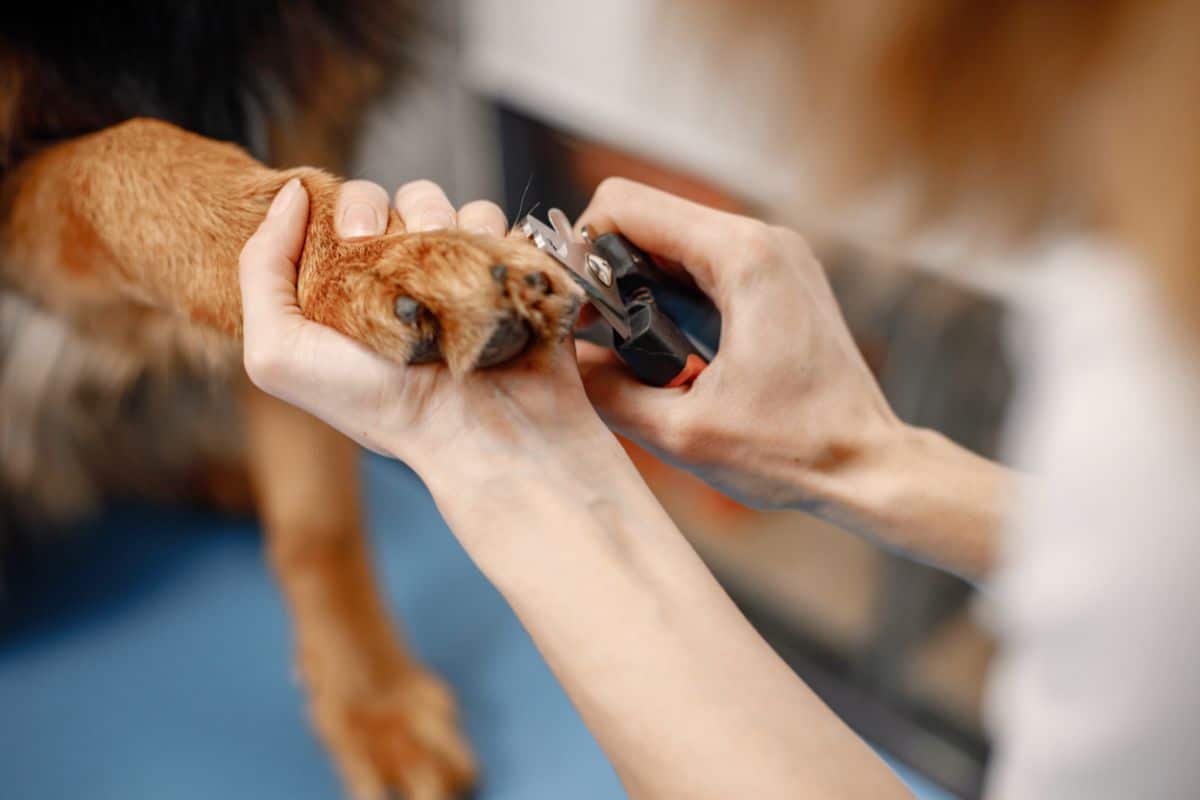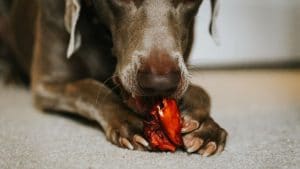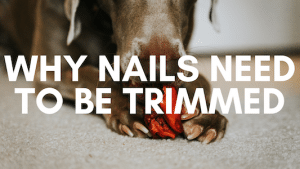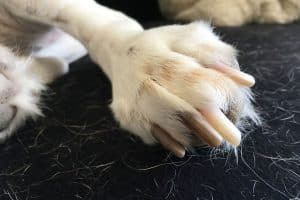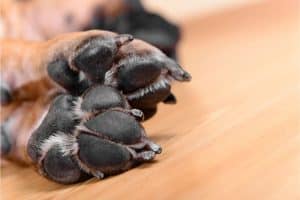If your dog is experiencing a painful or torn nail, or even a cut or cuticle, you’ll want to learn how to treat it.
This article provides great tips and advice on how to treat your dog’s nails safely and effectively. You do not want to be causing your pet any extra pain from a simple task like this.
This post provides a complete step-by-step guide on how to treat a torn dog nail is the easiest form possible and extra steps you might need to take.
Nail Breakages
If your pet’s nail breaks during the day or night you need to make sure it is not excessively bleeding and isn’t stopping because this can be quite dangerous for your dog.
If the bleeding does not stop and it has quite a flow, you should call the vets immediately and get them in as an emergency.
If the nail breaks and there is not too much blood coming out of the wound, it can be treated at home easily and you will be able to sort the problem quickly. Here are some steps to help you fix the issue in your own home:
- If you find the nail is still attached in some way, you need to make sure you have a clean and sterile nail clipper for your pets, so you can remove the nail to remove the discomfort your pet will have.
- If you find that there is some blood when this is completely removed, you should be adding some styptic powder to the area and it should help to stop it completely. However, not everyone will already have this in their home and regular flour will work just as well or cornstarch. Just a powder form to stop the bleeding.
- You need to make sure you are keeping the wound nice and clean throughout, but at this point you need to clean it with antiseptic to make sure it doesn not get infected as it will be an open wound.
- You can now bandage the area you have been cleaning to prevent anything getting into it as they run around and it will make them much more comfortable.
This process is very quick and simple, but you might need to keep reassuring your pet if they are in a bit of pain as they might make it more difficult to carry out.
If you notice anything after doing this that is not right like swelling or signs of infections, you need to make sure they are taken to the vets immediately.
Split Nails
If you find that your dog has split nails, this is not uncommon for most dogs – especially in the colder months.
This usually happens to dogs which have very brittle nails and there are ways to strengthen their nails to prevent this from happening.
You need to make sure your dog is getting regularly groomed which includes the nails as well as their fur.
You can also purchase some little dog boots for their nails and paws during the colder months.
These might take a little bit of time for them to get used to, but it will definitely help prevent this type of splitting and breaking from happening because they are more protected.
How Can You Notice There Is A Problem?
There are several symptoms you will notice when it comes to determining the problem with your dog.
You will see certain types of behaviors either change or become more frequent.
- They might start licking their paws more because they are trying to heal the problem and it is hurting them. Sometimes dogs will do this because they are cleaning themselves but if they are continuously licking their paws (see also ‘How To Remove And Prevent Dog Paw Calluses‘) it is because there is something wrong.
- You also need to look to see if they are limping at all and trying not to put any pressure on the paw. If you can see them trying to keep it in the air instead of on the ground, you should check it out right away.
- If they are quite resistant when you try to touch the paew, this could be another indication for you. They will try and protect their paw if they think someone is going to come and touch it and can get very defensive over it.
- If you can clearly see that the nail is not in the right position, then there has been a split or breakage. Sometimes the nail can twist to a weird angle when it has broken which can be very painful for your pet.
- If your dog’s paw is looking a bit swollen or has blown up a bit, this is another physical sign that something is wrong with the nail.
Conclusion
Overall, you need to make sure that you are looking out for these signs if something is feeling off about how your dog is behaving. Always be alert and keep a lookout!
Frequently Asked Questions
Will A Dog’s Torn Nail Heal On Its Own?
Will a dog’s torn nail heal on its own? Yes! Dogs’ nails are even tougher than the claws of a cat or a cheetah and can take weeks or even months to heal.
Here’s what you can do to speed up the process. Because healing a torn nail is a great time to get the dog’s nails clipped, it’s important to know what to look for when the nail does begin to mend.
